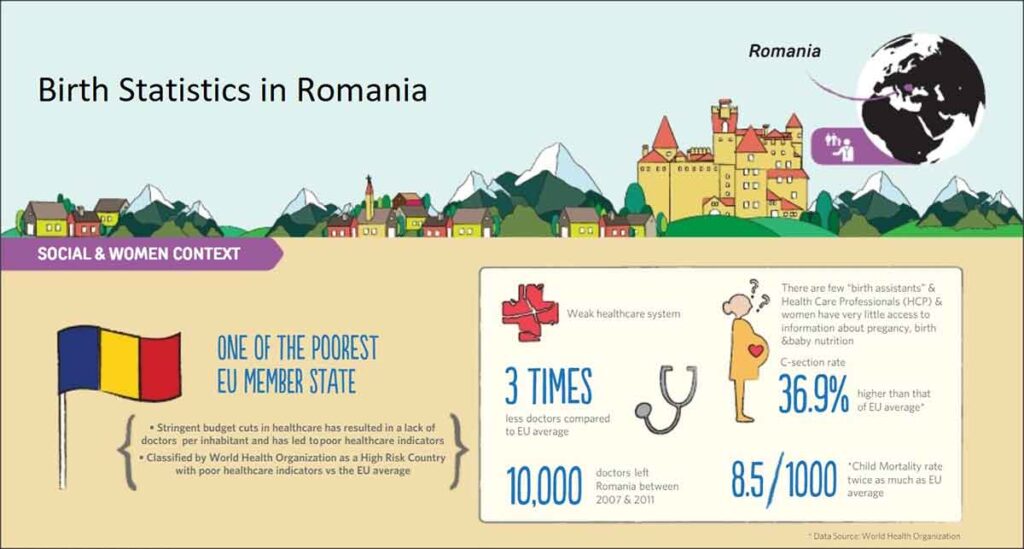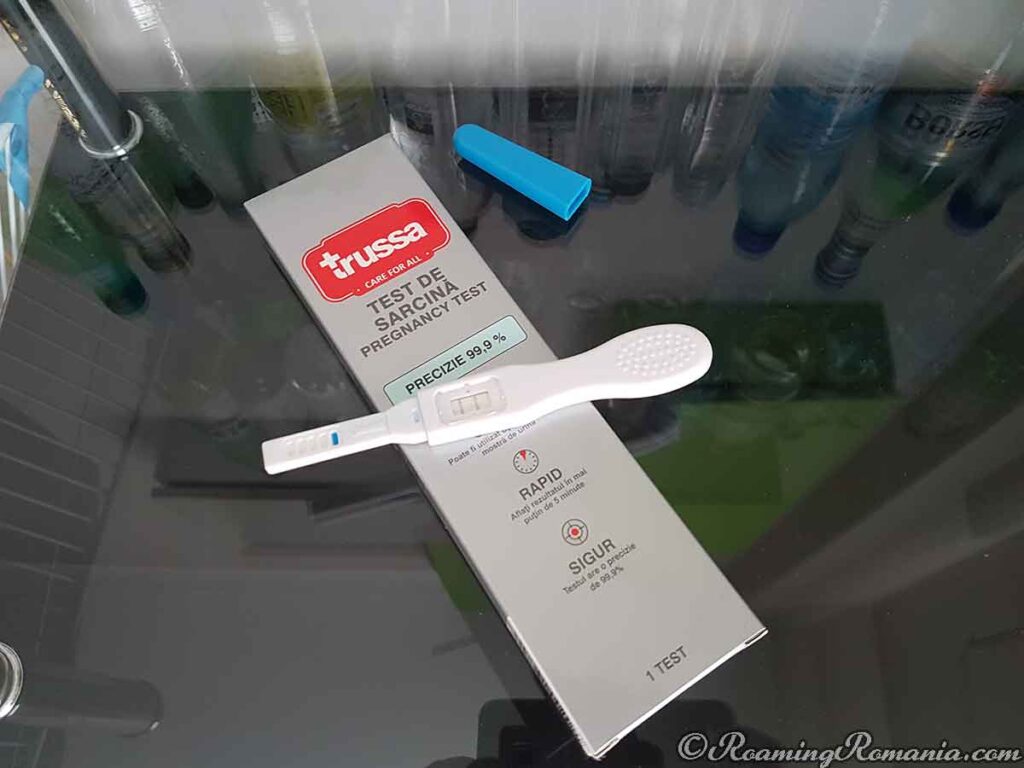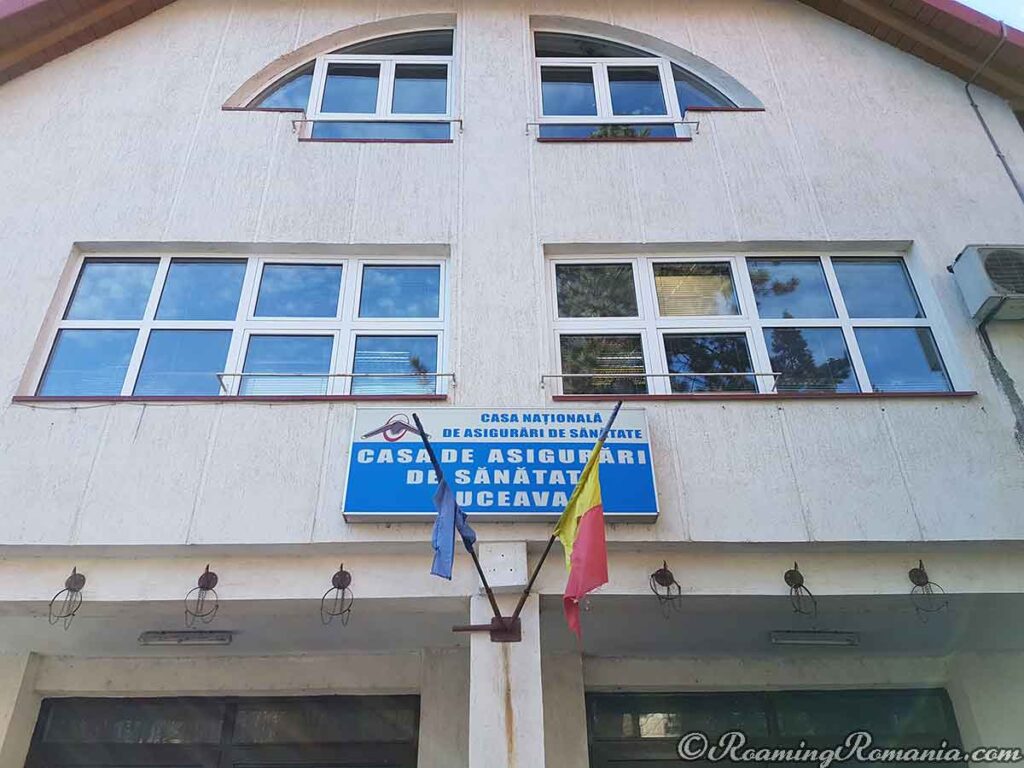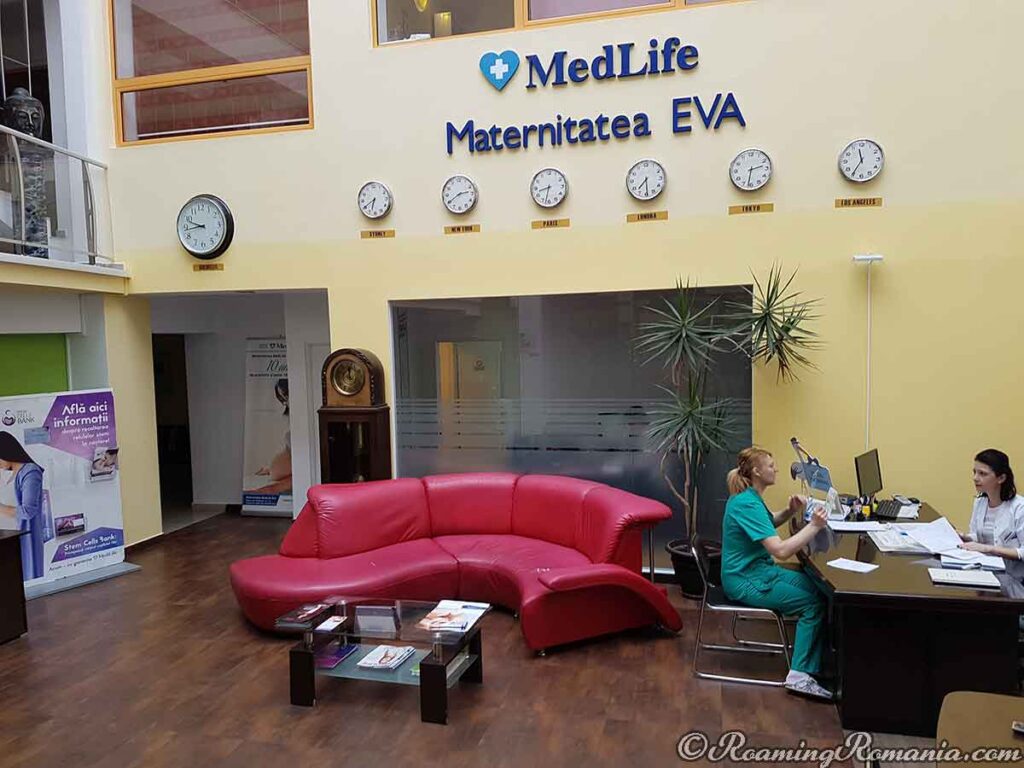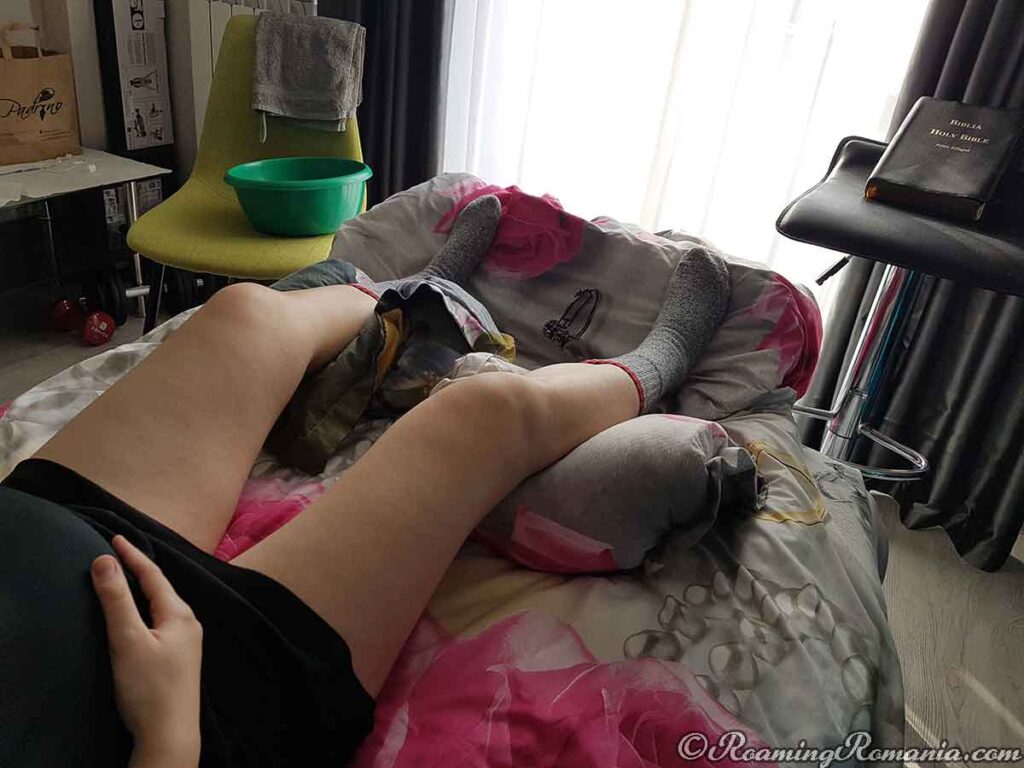If you’ve found yourself in a position of needing to give childbirth in Romania, there is a lot of information you will need to learn in order to make your delivery as pleasant as possible. A lot has changed over the decades in regards to prenatal care and birthing practices in the country. Some of the changes have been for the better, while others for the worse.
Shockingly, some of the methods still commonly practiced in Romania are ones left over from an archaic system that left women with little say in how they wanted to have their babies. Fortunately, though, there are now new laws and measures that provide pregnant women with more birthing options than ever before. However, ensuring those rights get respected can be a hard-fought battle in Romania.
Because we believe an informed individual has the highest chance of success in achieving their desired goals, we’ve written this guide to help you have a baby in Romania the way you want to have your baby. Our guide covers everything from the costs of having a baby in the country to decisions on using public or private facilities, to options related to vaccinations and shots, and much, much, more!
Childbirth in Romania – Part 1 – Table of Contents
This is Part 1 of a 2-part guide on giving birth in Romania. This part of the guide provides an overview of the process of giving birth in Romania.
Part 2 of the guide covers giving birth in Romania and all the topics associated with labor in Romania.
This part of the guide also provides information on Romanian; birth statistics, healthcare, cost of childbirth, and maternity leave.
The Following Topics are Covered in Part 1 of the Guide to Childbirth in Romania
- Overview of Giving Birth in Romania
- Childbirth Statistics in Romania
- Registering your Pregnancy in Romania
- Overview of Romania’s Public Healthcare
- Overview of Romania’s Private Healthcare
- Healthcare for Pregnant Women in Romania
- Costs of Giving Birth in Romania
- Choosing a Romanian Maternity Hospital
- Birth in a Public Romanian Hospital
- Birth in a Private Romanian Hospital
- Home Birth in Romania
- Maternity Leave and Maternity Risk in Romania
Overview of Giving Birth in Romania
Before we go into full detail of all the necessary steps and guides required to successfully give birth in Romania, we’ll first give a brief overview of what to expect throughout the whole process.
Don’t worry if you don’t know how, what, or where, any of the following is done. Later sections of the guides provide complete and detailed information on each step.
- After becoming pregnant, visit your family doctor and have the pregnancy registered.
- Consider your insurance coverage and out of pocket expenses.
- If public (CNAS) insurance, visit the Insurance House (casa de asigurari de sanitate).
- Calculate the costs of giving birth in Romania.
- Decide whether you want to give birth in a private or public hospital.
- Make a birth plan documenting the way you intend to give birth.
- Find an obstetrician who will honor your birth plan and preside over your pregnancy.
- Find a licensed midwife who will accompany you during childbirth.
- Remain monitored by your obstetrician and midwife for 9 months.
- Provide the hospital and staff with copies of your birth plan and waivers.
- Visit a hospital and give birth on due date.
- Register the birth and obtain a birth certificate.
Childbirth Statistics in Romania
To start our guide, we’ll first go over some of the most current statistics related to childbirth in the country. Statistics help us see a top-down view of what practices are most commonplace in Romania and what to expect. In later sections of the guide, we’ll provide you with information on how to avoid being part of a statistic in a category you oppose.
Because giving birth (no matter where it happens) can come with so many unforeseen situations, the best we can do before the big day is to prepare for as many possible incidents as possible. For example, you might be fully set on giving birth naturally, but medical complications might require a cesarean section. In a situation like that having a c-section could save lives.
Our guide won’t tell you how to avoid unforeseen and unplanned procedures that can end up saving you and your baby’s life. Rather, our guide will tell you how to avoid unnecessary procedures when there’s no need for them. Knowing the statistics of procedures that are commonplace in Romania will help you understand what you can expect when giving birth in the country.
The statistics presented below are all from official sources and obtained at the most recent date provided. Although many of the statistics are from previous years, overall, they generally don’t fluctuate too drastically to the present year. The source of the statistic is also provided as a link and in many instances also contains previous years so you can see the trends.
General Romanian Birth Statistics
The first category of statistics we will examine for Romania is the general birth statistics. These statistics give an overall view of what is happening in the country in relation to childbirth.
For this category of statistic, because of numerous variables, it can be hard to pinpoint what caused the outcome. This category, however, shows us overall childbirth stats and trends in Romania.
- 2014: Preterm Birth % Births: RO: 8.7 – EU: 8.7
- 2015: Total Births: RO: 201,760
- 2016: Births per 1,000: RO: 9.6 – EU: 9.9
- 2016: Mother Age First Birth: RO: 26.4 – EU: 29
- 2016: Fertility Rate: RO: 1.58 – EU: 1.57
- 2017: Crude Birth Rate: RO: 9.7 – EU: 9.9
Romanian Healthcare and Medical Facilities Statistics
What we can determine from the below statistics is that compared to other EU countries Romania spends very little of their GDP on healthcare, and is highly understaffed.
In Romania, there is a shortage of pediatrics, practitioners, and midwives. The main reasons for the shortages are the low salaries paid to medical professionals and their mass exodus to other countries for higher salaries.
- 2013: Midwives Practicing (per 100,000 population): RO: 16.26 – EU: 32.1
- 2013: Midwives Practicing Total: RO: 3,458 – Estimate of 2019: RO: 1,000
- 2013: General Pediatrics (per 100,000 population): RO: 11.5 – EU: 16.9
- 2013: General Practitioner (per 100,000 population): RO: 59.8 – EU: 79.4
- 2013: Beds in Publicly Owned Hospitals (per 100,000): RO: 600 – EU: 345
- 2014: Public Expenditure on Health PPP$ per Capita: RO: 868 – EU: 2,719
- 2014: Expenditure on Health Proportion of GDP: RO: 4.5 – EU: 7.3
- 2014: Total Health Expenditure % Proportion of GDP: RO: 5.6 – EU: 9.5
Romania Birth Delivery Statistics
What we can deduct from these statistics is that in Romania C-Section deliveries, episiotomies, and maternal mortality rates are very high. C-Sections are growing at an alarming rate and are done on nearly half of all births.
We can also see that the majority of C-Sections (43.3%) are not planned, but take place during labor or due to “emergency” reasons. As you will find out later in this guide, most “emergency” C-Sections done in Romania are actually done for the medical staff’s convenience and because of complications arising from artificial birth induction.
- 2013: Cesarean Sections % (1,000 live births): RO: 38.3 – EU: 27.2
- 2015: Cesarean Sections % (total births): RO:9
- 2015: Cesarean Sections % RO – Reason: Labor/Emergency: 43.3 – Reason: Elective: 3.6
- 2014: Episiotomy Procedure % During Vaginal Birth: RO: 61.8
- 2015: Maternal Mortality Ratio (mother death per 100,000 live births): RO: 31 – EU: 8
Romania Post Birth Statistics
These statistics show us that negatives such as child anemia, and neonatal death are much higher in Romania than in the EU. We also see that the practice of allowing a child to breastfeed within 1hr of birth is also extremely low in the country compared to the rest of the world.
- 2015: Neonatal Death (death within 28 days) per 1,000 births: RO: 3 – EU: 1.8
- 2016: Infant Mortality Rate (death within 1 year of 1,000 live births): RO: 7 – EU: 3.7
- 2016: Prevalence of Child Anemia (% of children under 5): RO: 26 – EU: 15.3
- 2018: Breast Feeding % Within 1hr of Birth: RO: 12 – World: 42
Romania Vaccination Statistics
These vaccination statistics show that for most categories Romanian infants receive far fewer vaccinations than in other EU countries.
Whether you’re pro or anti-vaccination, our section on vaccinations in Romania covers in-depth information about getting or opting out of getting vaccinations in the country.
Below are the statistics of the percentage rates in Romania of the most common vaccines.
- 2012: Tuberculosis: RO: 99 – EU: 56.8
- 2015: Influenza Type B: RO: 89 – EU: 95.7
- 2015: Diphtheria: RO: 86 – EU: 89
- 2015: Hepatitis B: RO: 90 – EU: 90
- 2015: Mumps: RO: 86 – EU: 93.6
- 2015: Pertussis: RO: 89 – EU: 96.2
- 2015: Poliomyelitis: RO: 89 – EU: 95.6
- 2015: Rubella: RO: 86 – EU: 93.5
- 2015: Tetanus: RO: 89 – EU: 96.2
Registering your Pregnancy in Romania
In Romania, most citizens have a family practitioner or general practitioner (GP) with which they consult or visit for periodic checkups. Individuals are free to choose and register with a GP of their choice located in the county they live in.
Any time a medical issue arises (aside from emergencies), the individual must first visit their GP for a consultation. The GP can either prescribe medication, treat the condition, or issue a referral (trimitere) to a specialist. Consultations with GP’s are free for those covered by Romania’s public healthcare.
If you’ve recently found out you’re pregnant, and you plan on giving birth in Romania, your first step is to visit your GP to inform them about the pregnancy. If you’re an Expat working in Romania you contribute to Romania’s healthcare system and thus are entitled to register with a GP of your choice.
Many expats, however, have private insurance since that’s one of the requirements for obtaining a visa for Romania. Most private insurance policies provide holders with access to private healthcare in Romania, allowing a complete bypass of the public system.
After registering your pregnancy with your GP, you will be given a referral to visit an obstetrician-gynecologist (OB/GYN). The OB/GYN can be any of your choosing who is contracted with the hospital you’ll be giving birth at. Part 2 of our guide provides details of how to find an OB/GYN in Romanian.
Overview of Romania’s Public Healthcare System
In theory, Romania’s public healthcare is based on the system of universal healthcare. In practice, however, the system has countless faults and citizens often times pay heavy out of pocket fees for medical supplies and procedures. Many in the population who can’t afford the “free” healthcare have to rely on charity hospitals for procedures.
Romania’s highly underfunded healthcare system (roughly 4.5% of GDP) has had a detrimental effect on the nations medical industry. Underfunding has left medical professionals with extremely low salaries, compared to their western EU counterparts, and hospitals with shortages of supplies.
Low medical salaries and underbudgeted facilities have led to a system of corruption and bribes. The corruption that takes place in Romania’s medical industry is so rampant and has been going on for so long, that it’s seen as commonplace and normal among the country’s citizens.
For public healthcare, there are two sets of prices. There’s the price advertised by the National Health Insurance House (CNAS), which claims “free” or a percentage co-pay. Then there’s the real price, hundreds, and sometimes thousands, of Euros paid out of pocket to medical staff in order to receive proper treatment.
Overview of Romania’s Private Healthcare System
For those with private health insurance that covers it, or those fortunate enough to afford it, private healthcare is another option in Romania. Private clinics and hospitals have seen a huge emergence in the country since Romania’s 2007 induction into the EU.
Private healthcare in Romania is virtually free from all the major problems which plague the public system. Private hospitals are adequately staffed, have state of the art equipment, don’t have supply shortages, and prohibit payment of bribes to their staff.
The main downside to private healthcare in Romania is the cost. Although private healthcare in Romania is expensive for a Romanian salary, it is considerably cheaper than the private healthcare found in many developed countries.
While costing less, private healthcare in Romania also conforms to the same high standards and quality of private healthcare found in developed countries.
Public Healthcare for Pregnant Women in Romania
Romania’s public healthcare system requires citizens to contribute social health insurance contributions (5.5% of monthly wage) in order to benefit from its use. However, there are certain exemptions which allow children, the unemployed, and pregnant women with full access to the system regardless of any contributions.
Even though public healthcare mainly covers public facilities, it also provides small subsidies for private healthcare. For instance, some private maternities in Romania offer discounted prices for birthing packages for those covered under public insurance.
The steps to take if you want to benefit from Romania’s free/subsidized public healthcare system for pregnant women are as follows.
- Visit your family practitioner (GP) so they can confirm and register the pregnancy.
- Receive a certificate confirming the pregnancy and a referral for health insurance.
- Visit the public insurance office in your area (Casa Asigurari de Sanatate).
- Provide them with ID, pregnancy certificate (issued by GP).
- Sign a declaration of no, or minimum income received for the year.
- Receive your health insurance certificate.
Costs of Childbirth in Romania
The overall cost of childbirth in Romania varies depending on many different factors. Overall, though, the main determining factors of the cost of childbirth in the country come down to the preferences of the individual.
Individual preferences include things like giving birth in public or private facilities, and the number of checkups and labs done. Most routine procedures involved with childbirth such as ultrasounds and labs are offered free under CNAS or are covered by private insurance.
Costs start mounting up when individuals seek extra procedures not covered under public or private insurance. For instance, CNAS doesn’t cover things such as genetic labs tests, or excessive ultrasounds.
Because costs of giving birth in public and private facilities range based on various factors, the best we can do is provide low- and high-end estimates of the costs based on data from around the country.
- The costs of giving birth in a public hospital in Romania range from 1,000 to 3,000 lei. Most of this is for bribes (Șpagă) to the medical staff.
- The costs of giving birth in a private hospital in Romania range from 4,000 to 7,000+ lei. These prices vary depending on hospital, location, and birthing package purchased.
Based on the above price estimates, or other preferences, your next step is to decide whether you want to give birth in a private or public Romanian hospital. The next sections cover both options.
Choosing a Romanian Maternity Hospital
Choosing a maternity hospital in Romania mainly comes down to location, and preference of public or private. Although most counties have a public maternity hospital within a reasonable amount of distance, the same can’t be said for private hospitals. Private maternities are typically only found in larger cities.
If you live in a rural part of the country, you might be limited to the nearest public hospital. Individuals living in larger cities usually have access to both private and public. An often-used option for those who live in rural areas is to travel to a larger city to give birth in a private hospital.
Some individuals might prefer Romanian maternities with English speaking staff. The best way to inquire if a hospital has English speaking personnel is by visiting the hospital’s website or by calling and asking. Another option of passing the language barrier is hiring a Romanian translator to accompany you to your appointments and delivery.
Baby Friendly Hospital Initiative in Romania
Another facet to consider when choosing a hospital is if it’s certified under the Baby Friendly Hospital Initiative (BFHI). BFHI hospitals are certified under the world health organization for practicing 10 steps to successful breastfeeding. The steps include things like allowing an infant to suckle within 1hr after birth, and avoiding powder formulas.
As of 2011, there are 31 public maternity hospitals licensed under the initiative and dozens of private ones. The best way to find out if a hospital is certified baby friendly is by visiting their website or calling and asking. UNICEF Romania used to manage a directory of all the certified hospitals, but as of 2019 the website no longer functions.
Although selecting a private baby friendly certified hospital virtually guarantees you will receive BFHI standard of care, the same can’t be said for public hospitals. Some public BFHI certified hospitals in Romania are known for not following the rules they were certified to adhere by.
There are reports from some BFHI maternities of women not being allowed to “room-in” with their babies, as is required under the initiative. Other reports have stated that women have had powder milk formula recommended, and even pushed onto them, something the initiative is supposed to prevent.
Although there is no guarantee you will be provided with all 10 steps of the BFHI initiative at a public hospital, we still highly recommend you choose a BFHI certified hospital if you have access to one.
Birth in a Public Romanian Hospital
Public hospitals in Romania have a negative reputation, and deservedly so. They are understaffed, have supply shortages, require bribes, and often treat patients poorly.
That being said, public hospitals in Romania account for more than 100,000 yearly live births. That figure lets us know that giving birth in a public hospital in Romania does indeed successfully take place.
Public Hospital Negatives
Although we know that the majority of births in Romania are carried out at public hospitals, we don’t know the full degree of the procedures that took place during the birth. Based on our research, we conclude that satisfaction of giving birth in Romanian public hospitals is very low.
Romanian maternity wards are notorious for having a high degree of a phenomenon known as obstetric violence. In short, obstetric violence involves the routine use of procedures that usually aren’t necessary, such as C-sections and episiotomies, and the verbal and emotional abuse of the patient.
Obstetric violence is so endemic in Romania that in 2013 the NGO Lion Mentor Association (LMA) was founded in order to combat the horrible practice. LMA produced a highly successful documentary film on obstetric violence during childbirth in Romania called Dare to Give Birth as You Wish.
Lion Mentor continues to be an advocate for medical reform and a fighter for the rights of pregnant women. Through their blog and by public outreach, the organization provides critical information on patient rights and a wealth of other information relating to childbirth in Romania.
Since obstetric violence rates are still high in the country, chances are you will experience it in some form if you decide to give birth in a Romanian public hospital. Of course, the abuse you may receive depends on the hospital and medical staff involved in your birth.
Part-2 of our guide details how to best prevent against obstetric violence in Romania by having a robost birth plan.
Public Hospital Positives
Although giving birth in a public hospital in Romania has many negatives, there are a few positives to consider. The two main positives are the price and the advanced capabilities of the medical staff.
The cost of giving birth in a public hospital is much more affordable than in a private one. Although technically it’s supposed to be free for pregnant women to give birth, it’s become custom to give bribes (Șpagăs) to the medical staff.
Bribes are given during and after the process of birth. The best way to find out the rates of what you should be prepared to give is by asking someone who had recently given birth at the hospital. You can also ask your GP, OB/GYN, or other medical personnel you consult with how much you’ll be expected to “pay for your birth.”
Besides cost, the other positive of giving birth in a public hospital is that public hospital medical staff are said to generally be more skilled than those in private hospitals. Some account this phenomenon to the fact that medical staff in public hospitals have much more experience than those in private hospitals.
Since the majority of Romanian’s use the public system, public medical staff have virtually non-stop patients and procedures they deal with. This overloaded schedule adds up to thousands of hours of in-field experience which hones the skills of the public medical staff. Private hospitals, in turn, receive far fewer patients than their public counterparts.
Birth in a Private Romanian Hospital
Private hospitals in Romania are springing up at an accelerated pace. As of 2016, there are about 200 units in the country, double the number of units found in 2011. The growth in private hospitals is mainly attributed to the demand from Romania’s rapidly growing middle class.
Romanian’s, in general, have very little trust in the public healthcare system which has been teaming with corruption, mismanagement, and negligence for many decades. Most Romanians, as soon as they can afford it, opt to use private health facilities over public ones, including for delivering their children.
Private Hospital Positives
Giving birth in a private Romanian hospital comes with many positives compared to giving birth in a public hospital. Although each private hospital is different and offers different packages, promotions, and options, in general, most have the below list of positives.
- Use modern technology and state of the art equipment.
- Clean and modern rooms and facilities.
- Appropriately staffed based on the number of patients seen.
- Flexible of birthing plans and birth requests in non-emergency situations.
- Option for water and Lamaze births (some hospitals).
- Bribes are not calculated into the price of the package and are forbidden.
Private Hospital Negatives
Although there are many positives in giving birth in a private hospital, there are also some negatives to consider. The three main negatives of giving birth in a private Romanian hospital are; price, accessibility, and medical experience. Fortunately, not all three of these apply for every situation.
The first two negatives we discussed earlier in this guide. In summary, giving birth in a private hospital typically costs 2 to 4 times more than a public one. Second, not all areas of the country have access to a private unit. Rural residents might have to travel and lodge in a larger city to reach a private hospital.
The third negative is the experience of private medical staff. Private hospitals have routinely been criticized for transferring patients to public hospitals during critical emergencies. Causes attributed to this practice include the skill level of public medical staff being higher than private staff, and public facilities being better prepared to handle emergencies.
Although these three negatives can indeed be impactful, if you can afford it and have access to one, we still recommend a private over a public hospital for giving birth in Romania.
Home Birth in Romania
Although home births in Romania do take place, they are very rare and are strongly advised against. Under the European Court of Human Rights (ECHR), Romanian women have the right to choose the circumstances of their childbirth. The state is required to provide specialist medical assistance to all delivering women in the country.
Even though home births in Romania are technically legal and fall under the ECHR, a set of laws contradictory to the ECHR prohibit support for them. For instance, there is a law which makes it a crime for doctors to attend home births. Home births which are carried out in the country are usually attended by a doula or independent midwife.
The main reason home births are advised against is due to the condition of the country’s emergency system and infrastructure. If an incident occurred during a home birth that required immediate medical attention, both mother and infant’s lives would be in great jeopardy. Ambulance response times, road conditions, and traffic congestion can combine to a cause a detrimental situation.
If you’re still set on going through with a home birth in Romania, you should be very well prepared. The best way to successfully carry out a home birth in Romania is by finding an experienced midwife who will inform you about, and attend your home birth. Part 2 covers finding midwives and doulas in Romania.
Maternity Leave and Maternity Risk in Romania
Romania has a system of maternity leave (Concediul de maternitate) in place which greatly benefits qualifying mothers with financial help before and after childbirth.
Maternity leave is not restricted just for Romanian citizens, all residents in the country qualify as long as they meet these conditions.
Qualifications for Romanian Maternity Leave
- Legal resident in Romania.
- You live with the child of which you are claiming maternity leave for.
- Contributed to Romania’s national health insurance for at least 6 out of 12 months.
Rules of Maternity Leave in Romania
- Maternity leave has a cap of 126 total days.
- Maternity leave can be requested from 63 days prior to her expected due date.
- Maternity leave can be requested prior to 63 days if the pregnancy is ruled high risk.
- The first 42 days of leave after a child is born are mandatory.
- The remaining 84 of 126 days are voluntary, depending on the wishes of the mother.
- Allowance is 85% of the 6-month average monthly income earned prior to leave.
- Allowance is not taxed, but 10% must be paid to Romania’s health insurance.
Maternity risk leave (concediu medical şi indemnizaţie de risc maternal) is a financial help system offered to pregnant or postpartum women who work in conditions which can cause harm to them or their child.
Qualifications for Romanian Maternity Risk
- Legal resident in Romania.
- Not be on maternity leave.
- Recommendation from a family doctor, obstetrician, or gynecologist.
Rules of Maternity Risk in Romania
- Can be granted for maximum 120 days before or after maternity leave.
- Is granted if you don’t have a child allowance request for a child up to 2 years old.
- Allowance is 75% of the 10-month average monthly income earned prior to request.
This concludes Part 1 of our guide to giving childbirth in Romania. Head on over to Part 2 of the guide to find out how to prepare for giving birth and labor in Romania.
